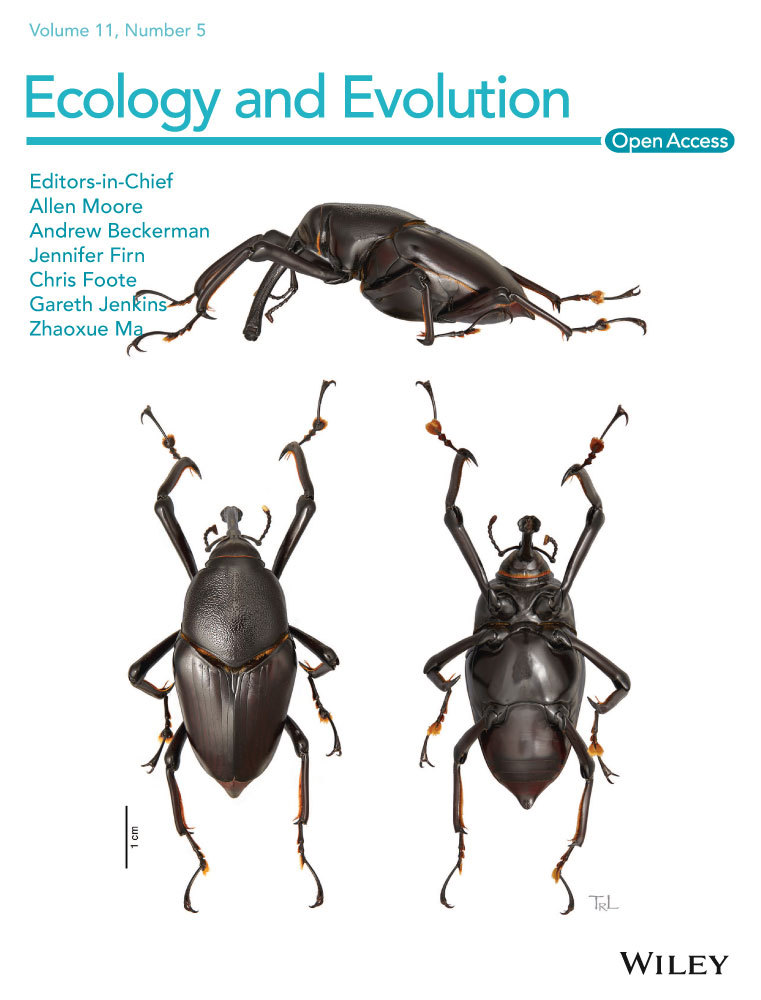Ver ítem
- xmlui.general.dspace_homeCentros e Institutos de InvestigaciónCIRN. Centro de Investigaciones de Recursos NaturalesInstituto de Recursos BiológicosArtículos científicosxmlui.ArtifactBrowser.ItemViewer.trail
- Inicio
- Centros e Institutos de Investigación
- CIRN. Centro de Investigaciones de Recursos Naturales
- Instituto de Recursos Biológicos
- Artículos científicos
- Ver ítem
Genetic studies of various Prosopis species (Leguminosae, Section Algarobia) co- occurring in oases of the Atacama Desert (northern Chile)
Resumen
In the Atacama Desert from northern Chile (19– 24°S), Prosopis (Leguminosae) individuals are restricted to oases that are unevenly distributed and isolated from each other by large stretches of barren landscape constituting an interesting study model as the degree of connectivity between natural populations depends on their dispersal capacity and the barriers imposed by the landscape. Our goal was to assess the genetic diversity and the degree of
[ver mas...]
In the Atacama Desert from northern Chile (19– 24°S), Prosopis (Leguminosae) individuals are restricted to oases that are unevenly distributed and isolated from each other by large stretches of barren landscape constituting an interesting study model as the degree of connectivity between natural populations depends on their dispersal capacity and the barriers imposed by the landscape. Our goal was to assess the genetic diversity and the degree of differentiation among groups of Prosopis individuals of different species from Section Algarobia and putative hybrids (hereafter populations) co- occurring in these isolated oases from the Atacama Desert and determine whether genetic patterns are associated with dispersal barriers. Thirteen populations were sampled from oases located on three hydrographic basins (Pampa del Tamarugal, Rio Loa, and Salar de Atacama; northern, central, and southern basins, respectively). Individuals genotyped by eight SSRs show high levels of genetic diversity (HO = 0.61, Ar = 3.5) and low but significant genetic differentiation among populations (FST = 0.128, FST- ENA = 0.129, DJOST = 0.238). The AMOVA indicates that most of the variation occurs within individuals (79%) and from the variance among individuals (21%); almost, the same variation can be found between basins and between populations within basins. Differentiation and structure results were not associated with the basins, retrieving up to four genetic clusters and certain admixture in the central populations. Pairwise differentiation comparisons among populations showed inconsistencies considering their distribution throughout the basins. Genetic and geographic distances were significantly correlated at global and within the basins considered (p < .02), but low correlation indices were obtained (r < .37). These results are discussed in relation to the fragmented landscape, considering both natural and non- natural (humans) dispersal agents that may be moving Prosopis in the Atacama Desert.
[Cerrar]

Autor
Bessega, Cecilia;
Pometti, Carolina;
Fortunato, Renee Hersilia;
Greene, Francisca;
Santoro, Calogero M.;
McRostie, Virginia;
Fuente
Ecology & Evolution 11 (5) : 2375-2390 (March 2021)
Fecha
2021-03-01
Editorial
Wiley
ISSN
2045-7758
Formato
pdf
Tipo de documento
artículo
Palabras Claves
Derechos de acceso
Abierto
 Excepto donde se diga explicitamente, este item se publica bajo la siguiente descripción: Creative Commons Attribution-NonCommercial-ShareAlike 2.5 Unported (CC BY-NC-SA 2.5)
Excepto donde se diga explicitamente, este item se publica bajo la siguiente descripción: Creative Commons Attribution-NonCommercial-ShareAlike 2.5 Unported (CC BY-NC-SA 2.5)


